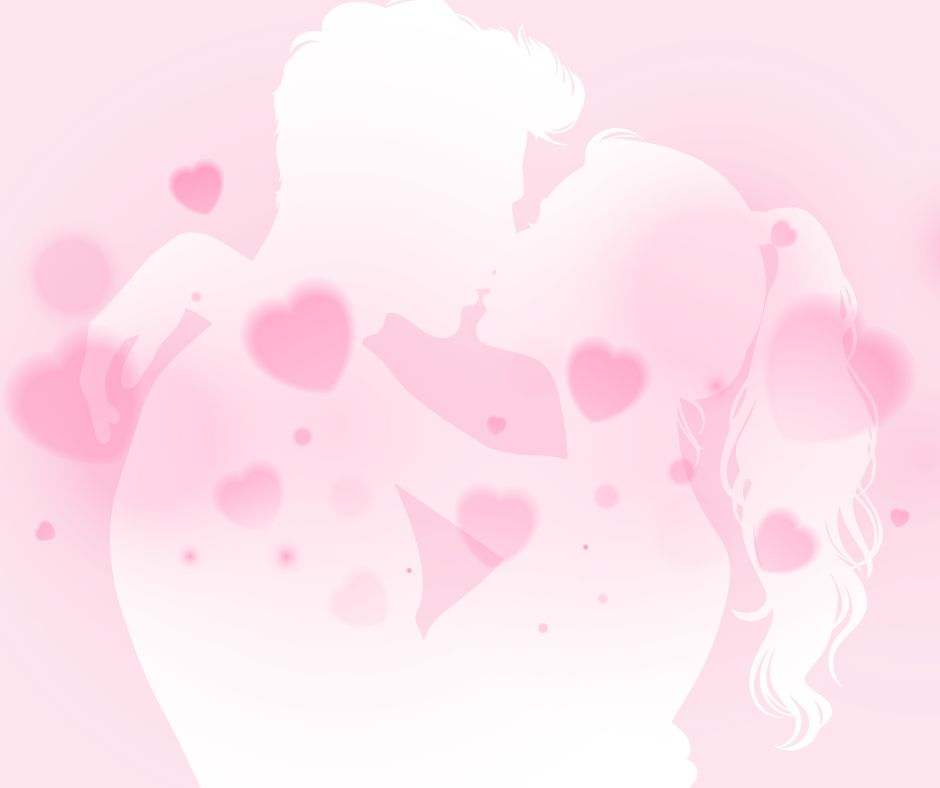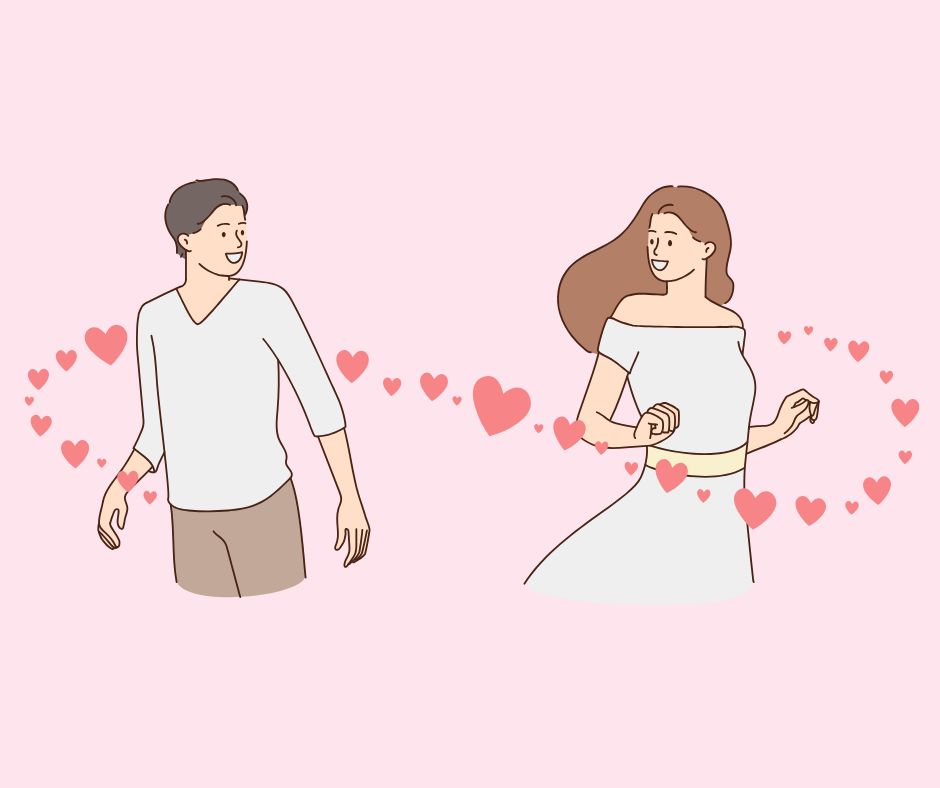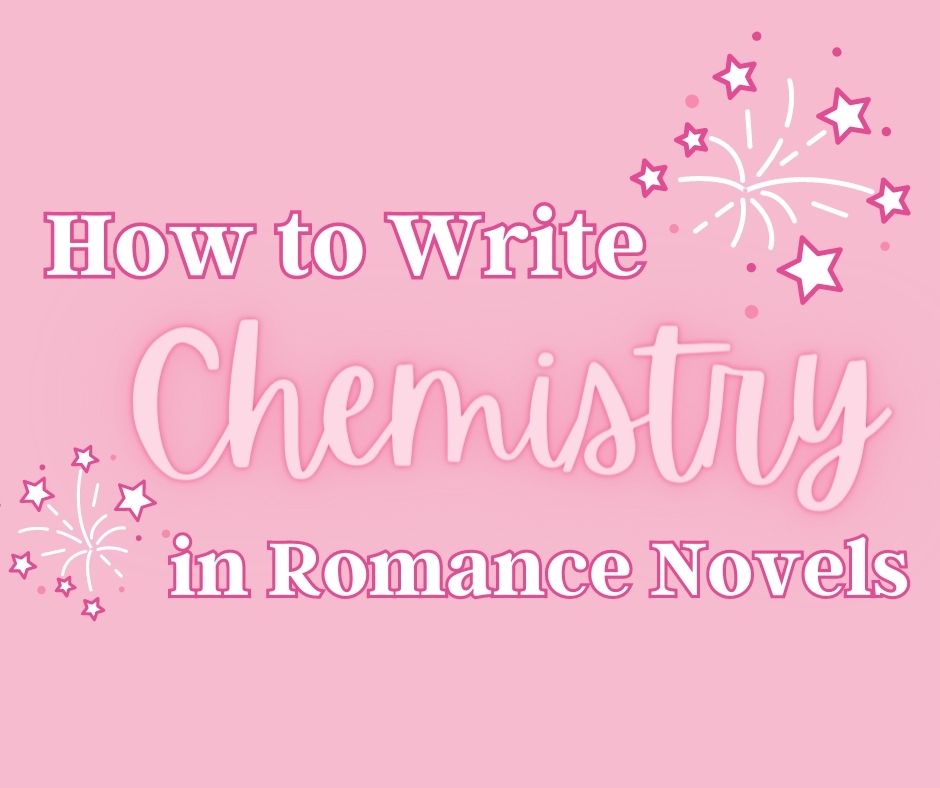How to Write a Swoon-Worthy First Kiss Scene

You’ve read romances and you know there are few moments that carry as much emotional weight or reader expectation as the first kiss. It’s the spark that ignites passion, the culmination of rising tension, and often the turning point where attraction transforms into something deeper.
But writing a truly swoon-worthy first kiss scene takes more than just bringing lips together. It’s about capturing the emotional stakes, the buildup, the chemistry, and the vulnerability that makes the moment unforgettable.
Here are tips to set up, execute, and end a first kiss in your romance.
Build the Anticipation
A swoon-worthy first kiss doesn’t just happen out of nowhere. It’s the result of slow-burning tension and emotional buildup that makes readers ache for it. To make that kiss land with real impact, you need to stir anticipation long before lips ever meet.
Start by layering emotional and physical tension in earlier scenes. Maybe your characters have shared lingering glances, brushed fingers while reaching for the same coffee mug, or leaned in too close only to pull away. These almost-moments are golden. They create expectation, desire, and a bit of delicious frustration for both the characters and the reader.
Think of every glance, every accidental touch, every stolen moment as a spark. When the kiss finally comes, it’s not just a kiss, it’s the explosion that ignites everything that’s been simmering beneath the surface.
Tip: Don’t rush it. The first kiss should feel earned. The longer you draw it out (without losing momentum), the more emotionally satisfying it becomes. When the reader is practically screaming, “Just kiss already!”—you know you’ve done it right.
Here is a sample of a near miss from Drawn to Her
Drake nodded as Lexie rinsed the dishes. She bent over to put them in the dishwasher, giving him a stellar view of her round, firm backside. Christ. Desire washed through him like a tidal wave. All the reasons he told himself he shouldn’t touch her vanished. He couldn’t help himself, even if he wanted to. As she stood, he caught her arm and pulled her to him.
“I wasn’t going to say anything about last night.” He tugged one of the curls he’d dreamt about running his fingers through. It was softer, silkier in reality.
There were those wide, expressive green eyes again. “That’s probably a good idea.”
He was pleased to see the flash of heat in her eyes and the quickening pulse at the base of her neck. At least he wasn’t alone in this overwhelming lust.
“Perhaps you got what you wanted last night.” He referred to the notebook she’d finally gotten away from him. “But I didn’t. I spent the whole damn night dreaming of this mouth.” His thumb traced her plump, pink lower lip.
In the background, a door closed. “I smell cooking! Is someone cooking in my kitchen?”
Drake’s eyes narrowed as he continued to hold Lexie firm against his body, knowing the evidence of his desire pressed against her belly, and not giving a damn.
“Saved again,” he whispered as he released her and stepped away.
Know Your Characters’ Emotions
The most memorable first kisses in romance aren’t just about heat. To make the moment truly swoon-worthy, you need to tap into what your characters are feeling in that exact moment.
Before the kiss happens, ask yourself: What are the emotional stakes?
Is one character afraid to take a risk? Are they relieved that the tension has finally boiled over? Are they hesitant because of past wounds, or exhilarated because everything finally feels right?
Explore those feelings in the scene. Maybe one of them is terrified of ruining the friendship. Maybe the other has been yearning for this kiss for ages, but never dared hope it would actually happen. The vulnerability, the hesitation, the surrender, those are the emotional threads that pull readers in.
Don’t be afraid to slow down the moment. Let your readers feel the thudding heartbeats, the held breath, the internal tug-of-war between should I? and I need to. That emotional honesty is what makes the kiss resonate.
Tip: Use internal monologue to let us peek into your characters’ minds. Let the reader see the flickers of doubt, the flash of realization, the silent this is it. That emotional transparency turns a good kiss into a great one.
Here’s an example of a lead up to a kiss from Drawn to Her
His steel gray eyes stared at her in hunger. “You really don’t know your effect on me, do you?”
Lexie had thought long and hard after her encounter with Drake on the porch and in the kitchen days before. She’d come to two conclusions: One, it wouldn’t be wise to get involved with Drake Carmichael. And two, despite his actions, someone like Drake couldn’t really be attracted to someone like her. He was sophisticated and posh. She was just a small-town, southern girl.
But she couldn’t explain away the things he’d said to her about wanting to relieve the sexual tension. Or how he’d nearly kissed her in the kitchen. And now, here he was holding her again, intensity rolling off him in waves she thought would drown her. His eyes were narrow and intent but also confused, as if he couldn’t figure out why he was feeling the way he was. Well, that made two of them. Lexie had no illusions of forever after with Drake, but that didn’t mean she didn’t want to indulge in the excitement being near him evoked.
Use the Five Senses
To pull your reader fully into the kiss, don’t just describe what your characters do, describe what they feel. The five senses are your best tools for creating an immersive, emotionally rich moment that readers can experience right alongside your characters.
Touch: Go beyond “his lips brushed hers.” What does it feel like? Is his touch tentative or confident? Are her fingers trembling against his chest? Is the air between them buzzing with energy?
Sight: What do they see in each other’s eyes before the kiss happens? Maybe there’s a flicker of hesitation, a silent question, or pure need. Does the world blur around them, or do they hyper-focus on each other?
Sound: Is the room silent except for their breaths? Is there music playing in the background, footsteps approaching, or a heartbeat thudding in someone’s ears?
Smell: The scent of their cologne, rain on their clothes, or even the sweetness of the cupcake they just shared, details like these create atmosphere and intimacy.
Taste: What does the kiss taste like? Coffee? Champagne? Something more metaphorical, like relief or longing finally fulfilled?
Use sensory detail not all at once, but intentionally and sparingly. Pick two or three sensory impressions that reflect the emotional tone of the scene.
Tip: Choose sensory cues that match the emotional stakes. A desperate kiss might focus on fast breaths and clumsy fingers. A soft, slow kiss might highlight warmth, the brush of fingertips, and the sound of rain tapping on windows.
Here is an example from It’s About Damn Time (free lead magnet!)
The world narrows to the soft press of his mouth, the warmth of his hand at my neck, the familiar scent of his cologne mixing with coffee and cookies.
Let the Setting Amplify the Mood
Where your characters share their first kiss can be just as important as how they kiss. The right setting can heighten the emotional stakes, deepen intimacy, and make the moment unforgettable.
Think about how the environment reflects or contrasts the emotions in the scene. A quiet, candlelit room can create a sense of safety and tenderness. A chaotic street after an argument might add urgency and intensity. A rainy night might bring melancholy or catharsis, while fireworks overhead might reflect explosive chemistry or celebration.
Use the setting as more than a backdrop. Let it interact with the moment:
- Does the heroine shiver from the cold, and the hero wraps his arms around her?
- Are they in a forbidden place, where the risk of being caught adds to the tension?
- Is there symbolic meaning in the setting, like a bridge (transition), a doorway (crossing into something new), or a storm (emotional upheaval)?
A well-chosen setting can add emotional depth and physical cues that make the kiss even more powerful.
Tip: Don’t over-describe. Choose two or three setting details that enhance the tone, like flickering firelight, the distant sound of thunder, or the way city lights reflect in a window. Let those details echo what the characters are feeling inside.
Here’s an example from an unpublished story I have given to my readers, Destined Forever. In it, for seven years, Matt has regretted letting his wife walk away from their marriage. They meet again by accident. It’s New Year’s Eve and snowing, a setting made for new beginnings and magic.
He turned and made his way back to her place. The snow was falling, swirling. It was New Year’s Eve, a perfect night for magic. As he got closer, he saw a figure moving toward him, quickly. He was about to step aside to give it room.
“Matt!” She rushed towards him. He watched as the snow glistened in her hair, her cheeks rosy from the cold.
It took him a moment to understand what was happening. But when he realized she was coming for him, he rushed to her, reached for her, gathered her to his body, and held tight. This time, he’d never let go.
“Grace.” He pressed his face to her neck. Her fingers cling to his coat as she wept. He cupped her face with his palms, tilted her head until he could look into her whisky colored eyes he’d loved for so long. Snowflakes clung to her lashes as she looked up at him.
He dipped his head, brushing his lips over hers. She hadn’t said a word, so he wasn’t sure he was doing the right thing. But then her lips parted, invited him in. He was tasting her again and was nearly drunk from it. Her kiss was all he remembered and more. It was a renewal.
Keep It True to Your Characters and Tone
No matter how steamy, sweet, or suspenseful the moment, the kiss should always feel authentic to your characters and the tone of your story. A kiss that doesn’t fit who they are or how your story is unfolding can feel jarring or forced.
Ask yourself:
- Would they kiss like this? A bold, confident heroine might grab the hero by the shirt and pull him in, while a shy, emotionally guarded character might hesitate, trembling on the edge before leaning in.
- Is this the right moment for this kind of kiss? A rom-com might lean into awkward, hilarious kisses (think bumping noses or being interrupted), while a darker romance might lean into raw intensity or quiet, aching vulnerability. A fantasy or historical romance might heighten the formality or forbidden nature of it all.
- Who initiates? Who hesitates? Who surprises the other? An impulsive heroine might jump right into a kiss. Someone who thinks the kiss is a bad idea might hesitate.
Let their personalities shape the physicality, pace, and emotional tone of the kiss. That way, the moment doesn’t just advance the plot, it deepens character development and emotional connection.
Tip: Avoid writing a “one-size-fits-all” kiss. Let the scene be specific, shaped by your characters’ quirks, fears, desires, and dynamic. That’s what makes it feel personal—and unforgettable.
Here’s a sample from It’s About Damn Time. It shows Emery’s playful, impulsive, joyful spirit.
My heart is thumping out of my chest as Drew’s words sink in. He’s loved me the whole time.
A laugh bubbles up from my chest. I launch myself at Drew, my arms wrapping around his neck as my lips find his. This kiss is different from the one in his car. No pretense, no cover story, just raw emotion pouring out after years of holding back.
His arms circle my waist, pulling me closer as he deepens the kiss. The scratch of his beard against my skin sends tingles down my spine.
When I finally pull back, I rest my forehead against his. “Does that answer your question?”
What Happens After the Kiss?
The kiss might be the climax of the scene, but what happens after can be just as important and sometimes even more emotionally charged. The aftermath reveals your characters’ emotional reactions, true feelings, and whether this kiss brings them closer together or complicates everything.
Maybe one of them pulls back too quickly, flustered and unsure. Maybe the other leans in, ready for more. Or maybe they both stand there in stunned silence, hearts pounding, wondering what just changed between them.
This is your moment to dig deep into the fallout:
- Do they regret it because of timing, circumstances, or emotional baggage?
- Do they embrace it and let go of the tension they’ve been carrying?
- Do they panic, deny it happened, or pretend it meant nothing (even though it meant everything)?
The aftermath lets readers feel the weight of the moment and gives your characters space to process what just happened. It’s also a great way to set up the emotional stakes moving forward.
Tip: Use body language, dialogue, and internal thoughts to show the ripple effects of the kiss. Let the aftermath carry emotional momentum into the next scene, whether it’s filled with joy, awkwardness, fear, or longing.
Example from Deadly Valentine:
That was when her brain finally regained control, and she jerked away from him. That had been way more than a little kiss. Too much more.
“Tess.” Jack dropped his brow to hers.
She reassembled her senses, rebuilt the wall that had for three years kept her heart safe. She pulled completely away, moving her chair back to its starting position. “I’m sorry. I can’t do this.” She grabbed a napkin to clean up the spilled ice cream.
“Leave it.” His voice was dark, rough.
“I can’t leave a mess like this…”
He let out a frustrated sigh. “How can you do that?”
“What?”
“I feel like I just had a life-altering experience and you’re acting like it was nothing.”
“It was just a kiss, Jack.”
She saw hurt and irritation in his eyes. “That was more than just a kiss.”
“We haven’t seen each other in a long time. It’s only been a few days. It can’t possibly be more.”
Common Pitfalls to Avoid in a First Kiss Scene
Writing a first kiss scene is a balancing act. Too much, and it feels overdone. Too little, and it lacks emotional punch. Here are a few things to watch out for as you craft your swoony moment.
AVOID….
- Overly Flowery or Purple Prose: Avoid getting lost in a sea of metaphors or overwrought descriptions. Lines like “her lips were like rose petals brushing against a moonbeam” might sound poetic, but they risk pulling readers out of the scene. Use clear, emotionally grounded language that reflects the tone of your book.
- Weird or Cringe-Worthy Euphemisms: Stick to words that feel natural and appropriate for your characters and audience. Terms like “mouth cave” or “love button” can derail a romantic moment fast. Don’t be afraid to use real, simple language, especially if your tone is modern, steamy, or sweet.
- Too Much Focus on Mechanics: While some physical detail is important, avoid turning the kiss into a step-by-step play-by-play. Just like sex scenes, you don’t need to describe every head tilt or hand movement. Specifically, avoid too much tongue play. Sure, the tongues can dance, but sentence after sentence of dancing, tangling, thrusting, etc isn’t sexy. Focus more on the emotion and sensation than the choreography.
- Rushing the Moment: If the kiss happens too early or without enough buildup, it won’t carry the emotional weight it needs. Make sure you’ve earned this moment through tension and character development so it feels satisfying when it happens. That’s not to say a surprise, impulse kiss can’t happen. What it means is that the reader should be feeling the attraction between them, so when it does happen, the surprise of it still feels real.
- Ignoring Consent or Emotional Cues: Even in a high-tension or impulsive moment, readers want to feel like both characters are emotionally and physically on board. A kiss that happens “out of nowhere” without any indication the other person wants it can feel jarring or worse, unsettling. Yes, a kiss can come out of the blue, but readers and the characters need a sense that it’s desired by both parties.
A swoon-worthy first kiss isn’t just about two characters finally locking lips. It’s about everything that leads up to that moment and everything that follows. When you build anticipation, tap into deep emotions, engage the senses, use your setting strategically, and stay true to your characters, you create a kiss that feels real. One that readers remember. One that lingers.
And don’t forget that sometimes, it’s not the kiss itself, but the emotional shift it causes that makes the scene unforgettable. So take your time with it. Let it breathe. Let it mean something.
Swoon-Worthy First Kiss Scene Builder
 Now go write that kiss and make your readers swoon. To help you, I have a free worksheet to guide you through all of the above elements of a great first kiss. It’s free to Write with Harte Members (you need to be logged in to access this area).
Now go write that kiss and make your readers swoon. To help you, I have a free worksheet to guide you through all of the above elements of a great first kiss. It’s free to Write with Harte Members (you need to be logged in to access this area).
Not a member? You can join free here.
If you have questions or comments about writing the first kiss scene, let me know in the comments below.








I’m new to this group but have seen your videos on YouTube and really enjoyed them. Your suggestions and insight are very helpful! Thanks!
Thanks for joining! I haven’t done videos in a while but have been wanting to get back to it. I’m glad you found them and WWH! Welcome!